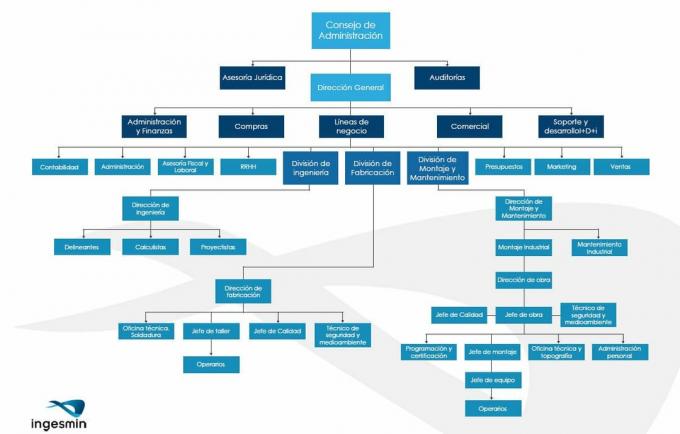In a organizational structure, the chain of command refers to the hierarchy of relationships dependency of a company - from the bottom to the top of an organization.
The chain of command It not only establishes the hierarchy of management responsibility or accountability, but also the lines of authority and the decision-making power of the company. A chain of command Appropriateness ensures that every task, every job and every department has a person who takes responsibility for their performance.
Advertisements

The chain of command within an organization
Training
Advertisements
The chain of command it is not established by accident. Organizational designers should be responsible for creating a structure.
The planners They consider the goals of the company first, since the organizational structure must support the strategy, and not the other way around.
Advertisements
Designers determine the tasks necessary to achieve the objectives. The departmentalization it depends on how the designers decide to group the tasks. Clustering affects the sharing of resources and the ease with which people communicate and coordinate work.
After the departmentalization, designers confer authority on each apartment. Once authority is assigned, planners can finally expose the relationships between each position, thus creating a chain of command.
Advertisements
Organization chart
The relationships established in the final stage of organization design are easy to see on an organization chart, representing the structure of a company.
Advertisements
Starting at the bottom, each position is connected to one above it by a line. Following the vertical line, from position to position, the chain of command. Each person is a link in the chain.
Scope of control
A manager can be related to many or few subordinates. The number of people who report to a manager is called a manager's span of control. Managers with extensive control spaces have many employees under their control and it is not possible for a manager to closely examine the activity. Consequently, employees under these managers have more authority to perform their jobs and even make decisions.
Flat organizations
When a manager has a wide scope of control, the Organization chart acquires a flattened and horizontal appearance. Fewer managers are needed, so the company has fewer levels in the hierarchy of power.
The chain can only consist of employees and the owner or employees, connected to a manager who in turn reports to the CEO, to make a direct chain of command. Lacking a major bureaucracy, the flat organizations they can be easily mobilized to meet market conditions, and adapt to what customers demand.
As you can see, the chain of command in the company is vital for its proper functioning, since it establishes the relationships between the different apartments, chains of responsibility and, even, the correct performance of many workers depends on it, and the control of the production.


